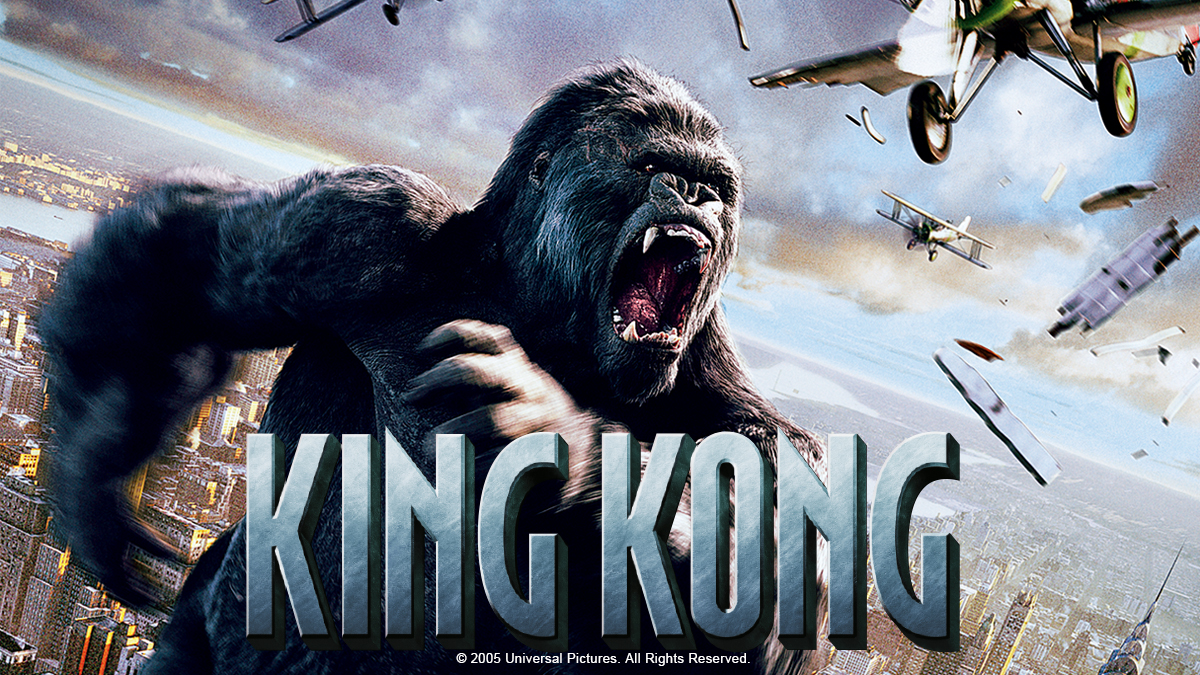
Welcome to the thrilling world of King Kong! This iconic movie has captured the hearts of audiences for decades with its gripping storyline, spectacular special effects, and unforgettable characters. Released in 1933, King Kong is a classic monster movie that tells the story of a gigantic gorilla who is captured and brought to New York City. The film has since been remade and rebooted multiple times, solidifying its status as a timeless cinematic masterpiece. In this article, we will take a deep dive into the fascinating world of King Kong and bring you 47 intriguing facts about the movie, its production, and its impact on popular culture. So sit back, grab some popcorn, and get ready to uncover the secrets behind the colossal legend that is King Kong.
Key Takeaways:
- “King Kong” revolutionized visual effects and storytelling in 1933, inspiring countless remakes and leaving an indelible mark on pop culture.
- The film’s enduring legacy continues to captivate audiences with its timeless tale of love, adventure, and destruction.
King Kong was released in 1933.
The original King Kong film was released on March 2, 1933, captivating audiences with its groundbreaking special effects.
It was directed by Merian C. Cooper and Ernest B. Schoedsack.
Cooper and Schoedsack co-directed the film, bringing their creative vision to life on the big screen.
King Kong was a landmark achievement in visual effects.
The movie featured innovative use of stop-motion animation and miniatures to bring the giant ape to life.
The iconic scene of King Kong climbing the Empire State Building is unforgettable.
This climactic scene has become one of the most iconic moments in film history.
The film was a commercial success, grossing approximately $2 million at the box office.
King Kong was a financial triumph, becoming one of the highest-grossing films of the 1930s.
King Kong inspired countless remakes, sequels, and adaptations.
Over the years, numerous films, books, and even theme park rides have paid homage to or expanded upon the legacy of King Kong.
The character of King Kong has become an iconic movie monster.
King Kong has solidified his place in pop culture as one of the most recognizable and enduring monsters in cinema.
The film’s original musical score was composed by Max Steiner.
Max Steiner’s evocative score helped create the tension and emotion that underscored the film’s dramatic moments.
King Kong was selected for preservation in the National Film Registry in 1991.
This prestigious honor recognizes the cultural, historical, and aesthetic significance of the film.
King Kong revolutionized the monster movie genre.
With its innovative special effects and gripping storyline, it set a new standard for creature features.
The film features the legendary scream of Fay Wray.
Fay Wray’s scream as she is held by King Kong has become an iconic moment in cinema history.
The original King Kong was filmed in black and white.
The monochromatic visual style adds to the film’s eerie atmosphere and timeless appeal.
The film explores themes of beauty, obsession, and the destructive nature of humanity.
King Kong delves into deeper themes beyond its spectacle, giving audiences something to ponder.
The character of King Kong was played by a combination of models and a 22-inch metal skeleton.
The inventive use of models and skeletons brought King Kong to life in a unique and memorable way.
King Kong was a critical success, receiving praise for its innovation and storytelling.
The film garnered positive reviews, solidifying its place as a cinematic masterpiece.
The success of King Kong led to a sequel, “Son of Kong,” released later in 1933.
Son of Kong” continued the story and further explored the world of the colossal ape.
The original King Kong was only 100 minutes long.
Despite its shorter runtime, the film managed to captivate audiences and become a classic.
The film’s groundbreaking special effects were created by Willis O’Brien.
O’Brien’s work pushed the boundaries of what was possible in visual effects during that era.
King Kong’s capture and subsequent rampage in New York City is a major plot point.
The film showcases the chaos that ensues when the majestic creature is brought to civilization.
King Kong was inspired by a combination of mythology and real-life events.
The film drew inspiration from stories of giant ape-like creatures and explorations of exotic locales.
The climactic fight between King Kong and a T-Rex is a thrilling spectacle.
This intense battle showcases the sheer power and ferocity of King Kong.
The film’s success led to the creation of “Kong: Skull Island” in 2017.
Decades later, King Kong returned to the big screen in a new iteration of the beloved story.
The iconic image of King Kong holding Fay Wray atop the Empire State Building is ingrained in popular culture.
This iconic image has been referenced and parodied in various forms of media over the years.
The stop-motion animation used in King Kong set a new standard in the industry.
It paved the way for future advancements in visual effects and inspired generations of filmmakers.
King Kong was released during the Great Depression, providing audiences with a much-needed escape.
The film offered a thrilling and captivating experience amid challenging times.
King Kong’s character has evolved over the years, with different filmmakers putting their unique spin on the story.
Each iteration brings a fresh perspective to the timeless tale of the giant ape.
The film’s success led to a merchandise frenzy, with King Kong toys and memorabilia flooding the market.
Fans could bring the awe-inspiring creature home with them through various collectibles.
King Kong has been referenced in numerous films, TV shows, and even music.
The impact of King Kong extends beyond the original film, leaving a lasting cultural influence.
Peter Jackson directed a remake of King Kong in 2005, paying homage to the original while adding his own artistic touches.
Jackson’s remake further exemplifies the enduring appeal of the King Kong story.
King Kong has influenced the creation of other iconic movie monsters, such as Godzilla.
The colossal creatures continue to captivate audiences and inspire awe.
The original King Kong has been digitally restored and re-released to preserve its cinematic legacy.
New generations of moviegoers can experience the awe-inspiring spectacle of the 1933 classic.
King Kong’s roar has become synonymous with the character’s presence.
The roar is instantly recognizable and adds to the creature’s mystique and power.
King Kong’s story has been adapted into novels, comic books, and graphic novels.
The character’s journey has expanded across various mediums, allowing fans to explore different interpretations.
King Kong was one of the first in a long line of monster movies that captured the imagination of audiences.
The film set the stage for future monster franchises and became the gold standard for the genre.
King Kong’s relationship with Ann Darrow adds an emotional depth to the film.
The bond between the behemoth ape and the vulnerable actress tugs at the heartstrings.
King Kong’s ascent onto the Empire State Building showcases his fearless nature and determination.
The climactic scene underscores the indomitable spirit of the iconic creature.
The film’s success led to the establishment of RKO Pictures as a major player in the entertainment industry.
RKO Pictures emerged as a key studio, thanks to the overwhelming success of King Kong.
King Kong’s legacy extends beyond cinema, influencing pop culture and inspiring future generations of filmmakers.
The impact of King Kong reaches far beyond its original release, leaving an indelible mark on the world of entertainment.
The character of King Kong has been parodied in various comedic films and TV shows.
His towering presence lends itself to humorous exaggerations and playful imitations.
King Kong’s journey from Skull Island to New York City is an epic adventure.
The film takes viewers on a thrilling ride through exotic locales and urban landscapes.
The cinematography in King Kong captures the grandeur and majesty of the creature and his surroundings.
The lush visuals immerse audiences in the captivating world of King Kong.
The film’s exploration of the dangers of exploitation resonated with audiences then and now.
King Kong serves as a cautionary tale about the consequences of exploiting nature for personal gain.
The legacy of King Kong continues to be celebrated at Universal Studios with the “King Kong 360 3-D” attraction.
Visitors can experience the thrills and excitement of King Kong’s world firsthand.
The film’s success led to a wave of giant monster movies in the decades that followed.
King Kong set a precedent for larger-than-life creatures wreaking havoc on cities.
The original King Kong is hailed as a masterpiece of American cinema.
Its impact on the film industry is undeniable, solidifying its place in cinematic history.
King Kong’s tragic demise in the film is a poignant moment that elicits sympathy from the audience.
The film explores the emotional complexity of the creature, adding depth to the story.
King Kong remains a timeless classic, captivating audiences with its timeless tale of love, adventure, and destruction.
The enduring appeal of King Kong ensures that the film will continue to enthrall viewers for years to come.
Conclusion
King Kong is a legendary movie that has captivated audiences for decades. With its thrilling storyline, groundbreaking special effects, and memorable characters, it has left an indelible mark in cinematic history. From its epic battles on Skull Island to its heart-wrenching finale in New York City, King Kong continues to be a masterpiece of filmmaking.The movie has not only entertained audiences but also inspired countless remakes, spin-offs, and references in popular culture. Its enduring popularity speaks to the timeless appeal of the story and the iconic creature himself. Whether you are a fan of adventure, drama, or monster movies, King Kong is a must-watch film that transcends genres and generations.King Kong has influenced not only the film industry but also the way we perceive and interpret stories. It has sparked discussions about the ethics of capturing and exploiting wild animals, the consequences of beauty and the beast narratives, and the power of empathy and understanding.In conclusion, King Kong is a cinematic masterpiece that continues to enthrall audiences with its timeless story, unforgettable characters, and groundbreaking special effects. It is a testament to the power of storytelling and the enduring impact of cinema.
FAQs
Q: When was the original King Kong movie released?
A: The original King Kong movie was released in 1933.
Q: Who played the role of King Kong in the original movie?
A: The role of King Kong was played by a large animatronic model and stop-motion animation techniques were used to bring the character to life.
Q: Are there any sequels or remakes of King Kong?
A: Yes, there have been several sequels and remakes of King Kong over the years. Some of the notable ones include the 1976 remake starring Jeff Bridges and Jessica Lange, and the 2005 remake directed by Peter Jackson.
Q: Is King Kong based on a true story?
A: No, King Kong is a fictional story created for the purpose of entertainment. However, it has been inspired by real-life events and characters, such as the fascination with exploring unknown territories and the capture and exhibition of exotic animals.
Q: Why is King Kong considered a classic movie?
A: King Kong is considered a classic movie due to its groundbreaking special effects, innovative storytelling techniques, and its enduring popularity and cultural impact. It revolutionized the monster movie genre and set new standards for cinematic spectacle.
Q: What is the significance of the Empire State Building in King Kong?
A: The Empire State Building serves as the iconic backdrop for the climactic scene in King Kong, where the giant ape climbs to the top of the building. This scene has become one of the most memorable moments in film history.
Hungry for more captivating facts about the iconic King Kong? Satisfy your curiosity by exploring even more surprising tidbits about this cinematic masterpiece. From the groundbreaking special effects that brought Kong to life on the silver screen to the thrilling showdown between two legendary monsters, there's no shortage of fascinating information waiting to be discovered. So, if you're ready to delve deeper into the world of King Kong, check out these additional articles that are sure to leave you even more amazed by this timeless classic.
Was this page helpful?
Our commitment to delivering trustworthy and engaging content is at the heart of what we do. Each fact on our site is contributed by real users like you, bringing a wealth of diverse insights and information. To ensure the highest standards of accuracy and reliability, our dedicated editors meticulously review each submission. This process guarantees that the facts we share are not only fascinating but also credible. Trust in our commitment to quality and authenticity as you explore and learn with us.


